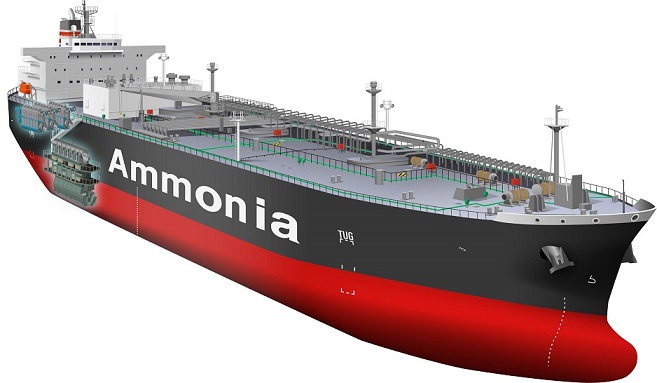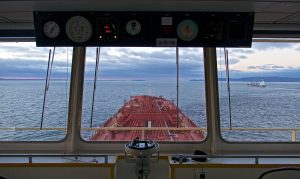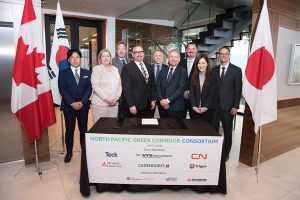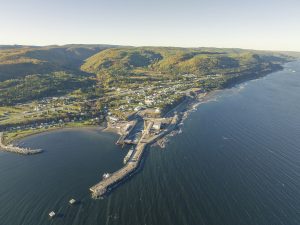NYK Line, Japan Engine Corporation, IHI Power Systems Co., Ltd., and Nihon Shipyard Co., Ltd. (the “Consortium”) received approval in principle (AiP) from ClassNK for an ammonia-fuelled ammonia gas carrier (AFAGC).
At present, there are no international regulations for the use of ammonia as marine fuel. Therefore, the Consortium have been conducting research and development to ensure that the AFAGC has the same safety features as vessels using existing fuel oil or LNG (liquefied natural gas) fuel.
With the goal of early social implementation of next-generation fuel vessels, the consortium is developing a two-stroke ammonia-fuelled engine for the vessel propulsion, a four-stroke ammonia-fuelled engine for onboard power supply and a safe and environmentally friendly hull.
The companies are working together to study the feasibility of the construction and commercial operation of the prototype vessel in an integrated manner.
The parties aim to reduce GHG emissions by achieving a maximum ammonia fuel mixed combustion rate of 95% for the main engine that moves the ship, and an ammonia fuel mixed combustion rate of 80% or more for the auxiliary engine that runs the generator.
NYK is in charge of project management, ship design and legal compliance and Japan Engine Corporation of research and design of the two-stroke engine.
IHI Power Systems is conducting research and designing a four-stroke engine as an auxiliary engine. Nihon Shipyard will develop hull and examine ship construction method.
With the goal of early social implementation of next-generation fuel vessels, the Consortium is developing (a) a two-stroke ammonia-fuelled engine for vessel propulsion, (b) a four-stroke ammonia-fuelled engine for onboard power supply, and (c) a safe and environmentally friendly hull. The Consortium is working together to study the feasibility of construction and commercial operation of the prototype vessel in an integrated manner.
Basic design of prototype vessel completed and AiP obtained
The main design issues when using ammonia as a fuel during development are as follows.
1. It is necessary to combust ammonia stably and operate the engine while increasing mixed combustion rate of ammonia, which is hardly flammable and has low energy density.
2. Since the combustion of ammonia generates nitrous oxide (N2O: about 300 times the warming potential of CO2) instead of CO2, it is necessary to control the combustion to suppress the generation of nitrous oxide.
3. A design to prevent leakage of toxic ammonia and adequate safety measures in the event of leakage are needed. Safety measures based on risk assessments are necessary to ensure the same level of safety as conventional vessels.
The Consortium has established the development hull design for this project to be an MGC (medium gas carrier, ammonia loading capacity: approx. Thirty-eight thousand cubic metres or more), which is currently common size for marine transportation of ammonia, and have developed and selected main and auxiliary engines and onboard equipment while securing an ammonia-loading capacity equivalent or more than that of conventional vessels. The Consortium has completed the concept design of a prototype vessel that can cope with the above issues through the safe and practical installation of ammonia-fuel-related equipment in the limited space available in the vessel. The equipment layout has been devised, and the Consortium will work on further design optimization.
The ship is scheduled for delivery in 2026.
Source: NYK





